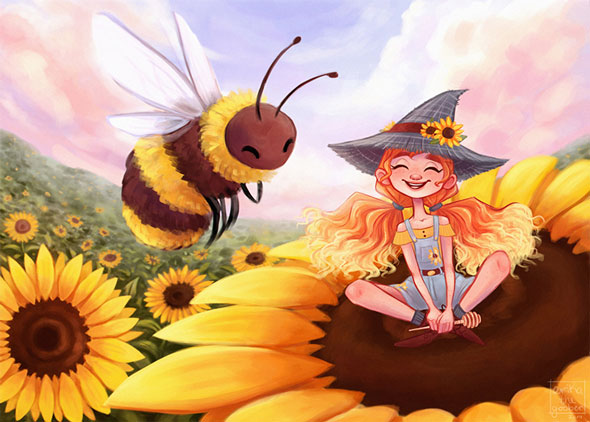
Do you ever get overwhelmed with learning Photoshop’s tools and/or settings?
When faced with a set of tools that feel unfamiliar, it’s easy to feel overwhelmed or stressed before even getting started. But here’s the good news! We offer a variety of Photoshop courses to help you navigate your digital art journey with confidence including Erika’s beginner-friendly course, “Digital Drawing in Photoshop.” Today, I’m excited to share some of Erika’s expert tips on mastering Photoshop brushes. Let’s dive in!
Note: Brush settings can be found by clicking ‘B’, the shortcut for the brush tool! The brush used in today’s lesson will be Photoshop’s default brush, “Chalk 36 Pixels”.
The brush opacity setting is used to change how transparent your brushstrokes appear. The lower the number, the more see-through the brush is. The higher the number, the more solid your paint will look!
When using the pen pressure opacity setting, the opacity of the brush will be determined by how much pressure is applied to your canvas. The less pressure you apply to your canvas, the more transparent the paint will appear! The pen pressure opacity is great for mimicking a natural painting experience. This tool can be found next to the opacity percentage box (looks like a circle with a pen).
Flow is similar to opacity but flow changes the transparency of the brush and the streakiness (depending on the brush). The lower the number, the less paint will come out. This setting is great for getting soft effects!
The longer your pen touches the canvas, the more paint comes out! The airbrush effect isn’t something Erika uses too often but she says it’s a setting that can make your paintings look more natural!
Smoothing is great for creating clean line art and precise lines. The higher the percentage is, the more “controlled” the brushstroke will look. Some artists prefer to work with no smoothing but if you struggle with shaky lines, this might be a brush tool you may find useful!
Note: Erika recommends a smoothing of 15%!
The bullseye tool controls line weight. The more pressure you apply, the thicker the brushstroke will appear. It’s great for creating precise, sharp lines and can turn any brush—even big paint brushes—into detail brushes! Press lightly for a thinner result!
Note: Erika doesn’t recommend using this option when doing a lot of blending or when there’s a need for big brushstrokes (i.e. painting a wash across an entire canvas).
These brush settings aren’t totally necessary to create an amazing piece of work but knowing how to create a brush that best fits your needs can certainly help you reach the results you’re looking for. Ready for more photoshop tips? Check out the FREE lessons in Erika’s beginner Photoshop course, “Digital Drawing in Photoshop!” If you’re looking for something more advanced, here is the intermediate version: Digital Drawing in Photoshop! Have fun creating and see you all next time!
Bree is a digital artist based in California. She enjoys helping new artists grow and loves to create artwork of her own.